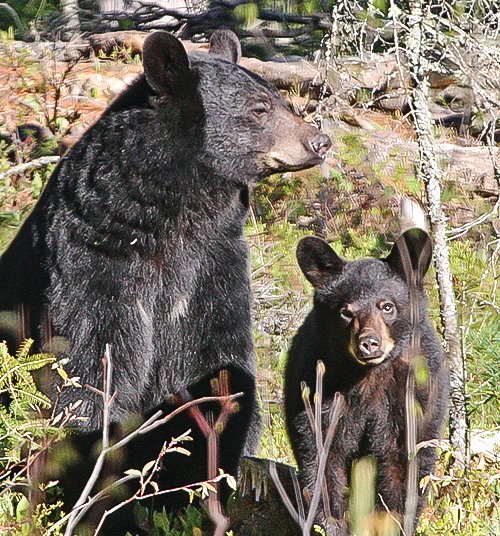Support the Timberjay by making a donation.
Advantage goes to bears as season opens Sept. 1
Hunters’ baits less of a pull for bears luxuriating in a bonanza berry crop
REGIONAL— What a difference a year makes. Last year in late August, area guides were eagerly awaiting the Sept. 1 start of the bear hunting season. With the region then in extreme drought, …
This item is available in full to subscribers.
Attention subscribers
To continue reading, you will need to either log in to your subscriber account, or purchase a new subscription.
If you are a current print subscriber, you can set up a free website account and connect your subscription to it by clicking here.
If you are a digital subscriber with an active, online-only subscription then you already have an account here. Just reset your password if you've not yet logged in to your account on this new site.
Otherwise, click here to view your options for subscribing.
Please log in to continue |
Advantage goes to bears as season opens Sept. 1
Hunters’ baits less of a pull for bears luxuriating in a bonanza berry crop
REGIONAL— What a difference a year makes. Last year in late August, area guides were eagerly awaiting the Sept. 1 start of the bear hunting season. With the region then in extreme drought, natural foods were in short supply and black bears were pounding the baits that guides and hunters use to pull the bruins in close to their stands.
This year, after a wet summer and with the lingering effects of a bumper berry crop in much of the area, it’s looking like hunters will have to work harder this time.
“It’s making it a lot harder,” said Jesse Brunner, a longtime Cook area bear guide. “The bears are coming in but they’re not hitting like they normally do.” Bear baiting got underway Aug. 15, as allowed by law in Minnesota.
Brunner said an abundance of blueberries, raspberries and chokecherries are keeping the bears pretty content out in the woods right now. He noted that one of his baits is located on the edge of a big patch of plump, ripe blueberries. “A bear could just sit out in the middle there and eat all day,” he said.
After three years of relatively high hunter harvests, DNR officials are predicting the bears might get a break this fall. “We’re expecting average to below average hunter success,” said Jessica Holmes, the Tower area DNR wildlife manager. The impact of a solid crop of wild foods has been obvious to DNR officials for some time. “My problem bear calls have certainly dropped off,” said Holmes. And if bears aren’t raiding bird feeders and garbage cans, it’s because they’ve got all the food they can handle out in the wild. That’s good news for bears, but Brunner said it’s going to make hunters have to work harder than in the past few years. “They’re just going to have to put the time in, and try a few different things,” he said.
A lower harvest would help the DNR in its efforts to recover the bear population, which was cut in half in the 2000s by a series of aggressive harvests. The DNR dramatically dropped the number of bear permits it issues each year in the quota zone, from more than 20,000 in the early-to-mid-2000s to a low of 3,350 in 2017 and 2018. But back-to-back poor food years beginning in 2019 had pushed harvests up again in recent years, including the harvest of female bears, which provide the foundation for population recovery.
Female bears are even less likely than males to approach hunters’ baits when wild foods are abundant, so this year’s berry crop could help keep sows out of the crosshairs. And if the sows go into their winter dens with a healthy fat reserve, as is typical in a good food year, they are likely to have a bigger litter come late winter, when the tiny young cubs are born in the den.
While conditions in northern St. Louis County are likely to tilt in favor of the bears, that’s not true in every part of Minnesota. Brunner said guides he’s corresponded with in central Minnesota, where the summer was considerably drier, are seeing good activity at their baits. And Holmes said the strong berry crop is somewhat spotty even in the north, depending on where and when rains fell, and how much.
For now, Brunner said he’s hoping for drier weather, which will ease access in some places and help to spread his bait scent. Once the season opens next Thursday, hunters will likely be looking for some cooler nights to help chill field dressed meat— assuming they’re successful. “Temperatures below 50 would be ideal,” said Holmes.






